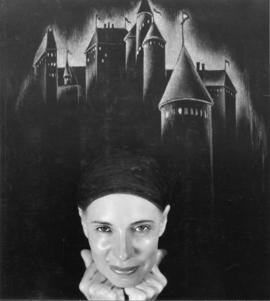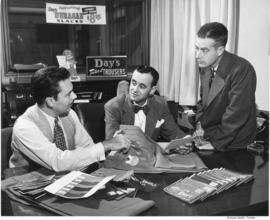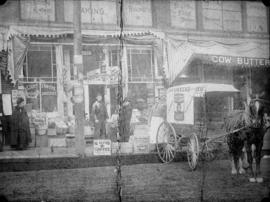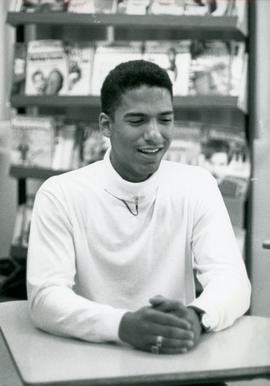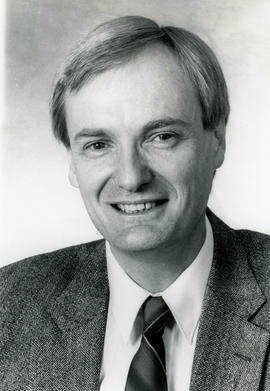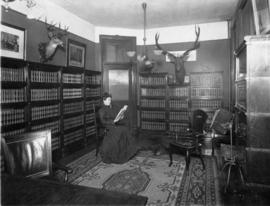Elizabeth Sale (1886-1981) was a poet, novelist, and literary editor who spent her formative years in Tacoma, Washington. She was born Bettie Sale Clemmons June 26,1886, in Monroe County, Indiana. When she was three years old, her extended family moved to Tacoma, Washington, where her father and uncle worked as letter carriers. She married James Murdoch Stewart (1885-1956) in 1908 and they adopted a son, Harry Edward Skarbo (1908-1956) sometime after the death of his birth mother in 1911. Their second son, James Murdock Stewart, Jr., (1914-1999) was born November 24, 1914.
She was a charter member and the third president of the Tacoma Writers’ club, which was inaugurated in 1919. Her poetry was published in Washington State journals The Tacoman and Muse & Mirror, as well as syndicated in newspapers in the United States and Canada. She performed on KOMO radio in the late 1920s as “Aunt Missouri Jackson”, a Black “mammy” character in skits that she wrote every week. Her son Harry was to have his own fame in radio, nightclubs, and movies performing in Swedish dialect as “Yogi Yorgesson”, the Hindu mystic. By 1930, she was divorced and living in New York City. On April 14, 1931, she married Christoffer Fotland (1891-1972), a Norwegian sea captain, and had relocated to the Los Angeles area in California. She continued to be active in poetry circles in California and joined the San Pedro Writers’ Guild in 1936, of which she was later president.
She had begun writing her first novel as early as 1934, when she lived in Tacoma for two months while doing research. This year she began her collaboration with Virna Haffer (1899-1974) on a volume of erotic poetry and photographs, called Abundant Wild Oats. It was to be published by The Writer's Press in New York City in 1938, although it was never produced. A mock-up of the cover survives, along with a promotional brochure, a few poems, and a handful of Virna Haffer’s photographs. Her novel, Recitation From Memory (1943), was set in Tacoma and based on her early childhood experience. Her reminiscence continued through her second novel, My Mother Bids Me Bind My Hair (1944), which followed her life up to her first marriage. For ten years (c. 1938-1948) she worked as poetry editor of Rob Wagner’s Script, a weekly literary and film magazine published in Beverly Hills. Two volumes of her poetry were published, The Field (1968), and Where Lies the Land (1974). She lived the last two years of her life with her son James in Grand Junction, Colorado, where she died February 5, 1981.
